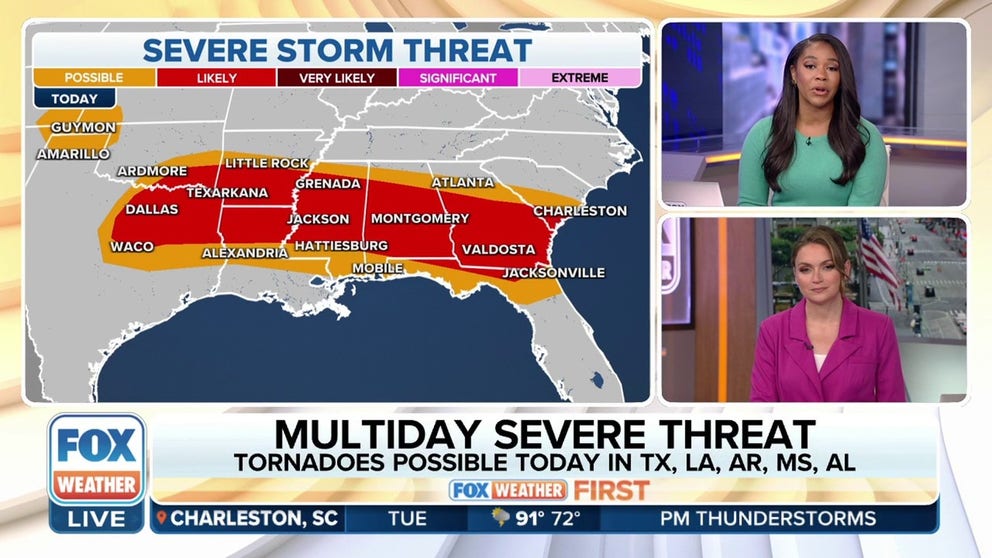Large hail battered Colorado, Texas on Monday as severe storms erupted across Plains, South
Severe thunderstorms erupted across the Plains and South on Monday and produced large hail, damaging wind gusts and torrential rainfall.
Multiday severe weather threat continues Tuesday from southern Plains to Southeast
Rounds of severe thunderstorms are expected throughout the day Tuesday from parts of the southern Plains eastward to the Southeast. Large hail and damaging winds are the primary threats.
Colorado and Texas were battered by large hail on Monday amid a multiday severe weather threat stretching from the Plains to the Southeast.
In Boulder, Colorado, so much hail came down Monday afternoon that it looked more like snow coating the sidewalk. Rain came down and washed the hailstones through gutters.
Colorado hail looks more like snow
Hail fell so heavy in Boulder, Colorado that it coated the ground and looked more like snow.
Farther south, drivers in Colorado Springs were forced to abandon their cars on streets because floodwaters rose so fast as storms dumped torrential rainfall. Officials had to close several roads around Colorado Springs Airport.
Some parts of central Colorado saw thunderstorms that dropped 3 to 5 inches of rain at the rate of 1 to 2 inches per hour.
Several cities across Colorado also reported quarter-sized hail. Egg-sized hail fell in Penrose, Colorado.
Meanwhile, in the South, strong winds tore down tree limbs and power lines across Louisiana and Georgia.
The National Weather Service reported widespread hail across Central Texas. The largest hail was reported in Pampa, Texas, where it was estimated to be baseball-sized.
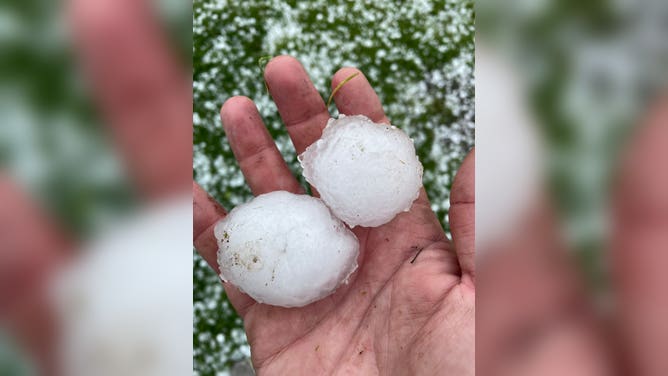
Large hail fell across Texas.
(@KOhsfeldt/Twitter / FOX Weather)
Severe storms threaten the South on Tuesday
Organized clusters of severe thunderstorms could develop from Tuesday into Tuesday night across parts of northeastern Texas, southeastern Oklahoma, southern Arkansas, northern Louisiana, central Mississippi and Alabama, Middle and South Georgia and northern Florida.
A few of the storms could be supercells capable of producing large hail, damaging wind gusts and a couple of tornadoes.
The Dallas-Fort Worth Metroplex, Shreveport in Louisiana, Jackson in Mississippi, Birmingham and Montgomery in Alabama and Columbus in Georgia are a few of the larger cities that could see severe storms.
WE'VE ENTERED AMERICA'S MOST ACTIVE TIME OF YEAR FOR DAMAGING WINDS FROM SEVERE STORMS
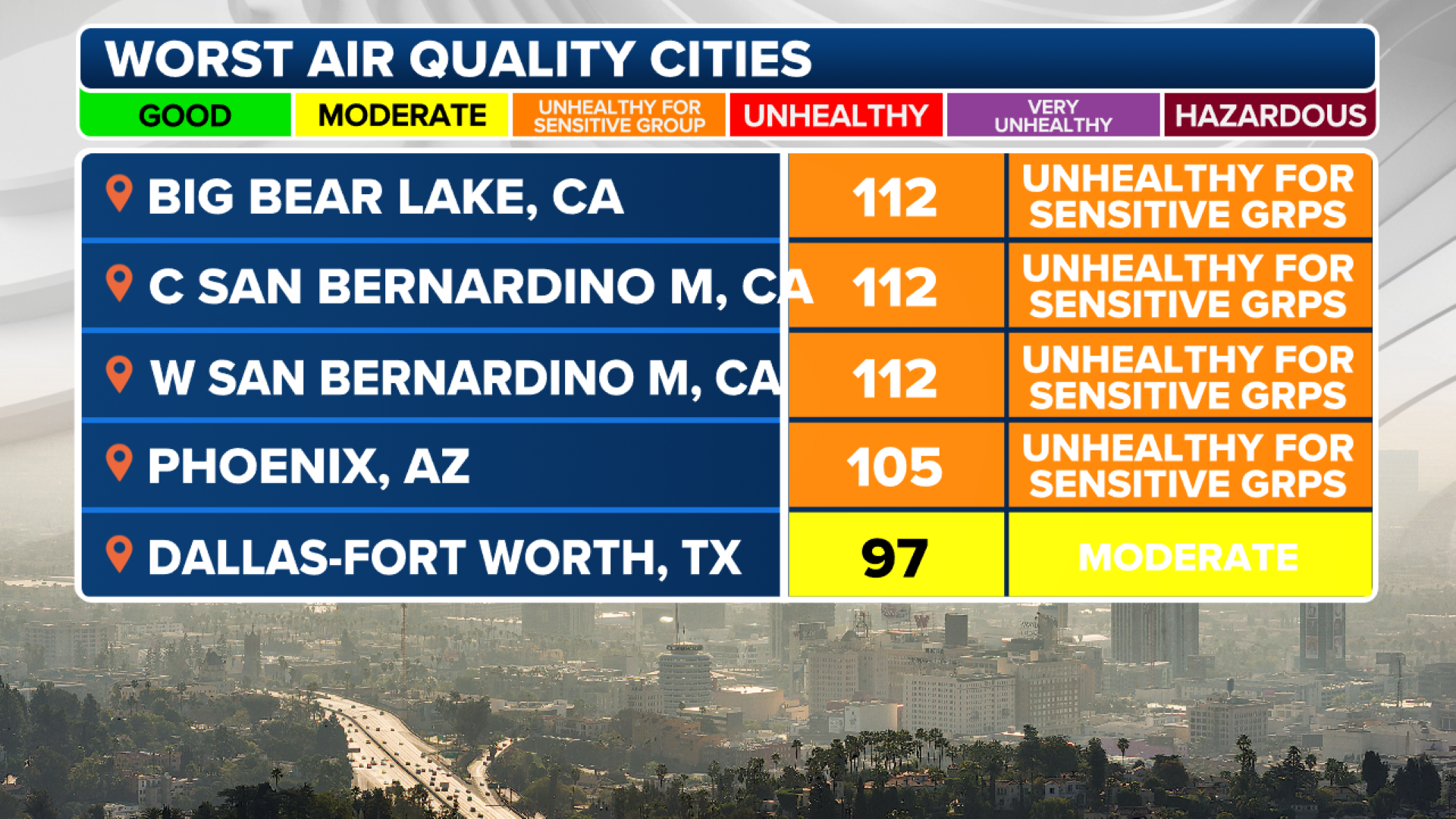
(FOX Weather)
Severe weather threat shifts to Southeast on Wednesday
Severe thunderstorms capable of producing large hail and damaging wind gusts are possible across portions of the Southeast on Wednesday.
Some of the larger cities at risk of severe weather include Jackson in Mississippi, Montgomery in Alabama and Columbus and Macon in Georgia.
HOW LARGE IS ‘GOLF BALL-SIZED' HAIL AND OTHER HAIL MEASUREMENTS?

(FOX Weather)
Additional severe storms possible in Southeast on Thursday
As the storm system responsible for the severe weather lingers over the Southeast, additional rounds of severe thunderstorms could fire up from southern portions of Alabama and Georgia into northern Florida on Thursday.
Damaging wind gusts and large hail will likely be the primary threats in the region.
SCORCHING SUMMER PREDICTED ACROSS U.S. WITH NO AREAS FORECAST TO BE COOLER THAN AVERAGE
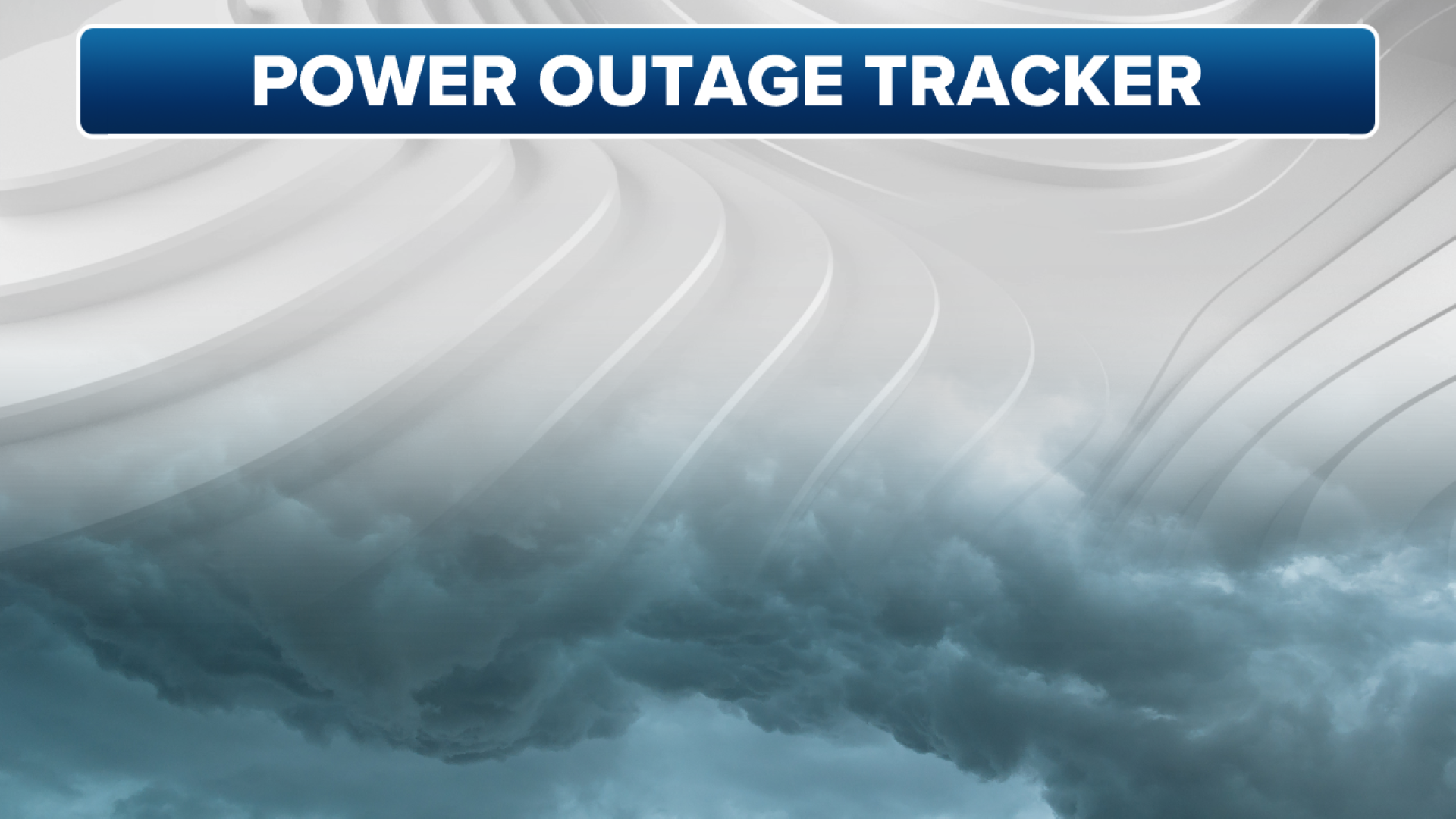
(FOX Weather)
Flash flooding could also become an issue in Southeast
The Southeast also faces the threat of flash flooding this week, as multiple rounds of heavy rain will likely dump a large footprint of 3 to 5 inches of rainfall by the end of the week. Many areas could even eclipse 5 inches of rain.
PEAK FLASH FLOOD SEASON IN U.S. BEGINS IN JUNE

(FOX Weather)
Active weather pattern comes after a quiet May
The daily threats of thunderstorms this week could buck a trend of below-average severe storm activity that has been observed for several weeks. Nearly a dozen states east of the Rockies had no reports of severe weather during May, which was the quietest since at least 2004.
The potential for a less-active severe weather season was expected by the FOX Forecast Center, with the exit of La Niña and a march toward El Niño.
Research completed by various private, government and educational groups has found that neutral-ENSO conditions – neither El Niño nor La Niña – tend to produce tornado and hail events that are more in line with average or slightly below average, and El Niños can be even quieter.
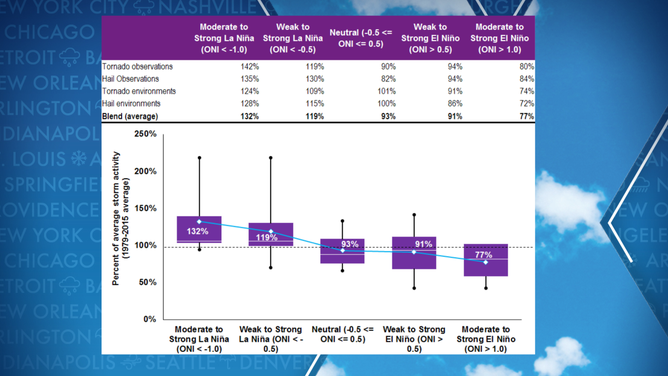
Hail and tornado activity vs. the state of atmosphere.
(Willis Re / Columbia University / FOX Weather)
